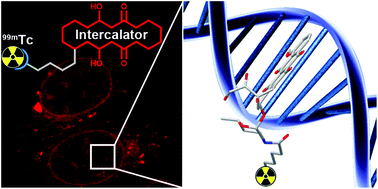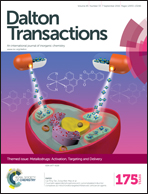Towards 99mTc-based imaging agents with effective doxorubicin mimetics: a molecular and cellular study†
Abstract
Doxorubicin is a clinical benchmark drug, which is applied in the treatment of numerous cancers. Known for its accumulation in the nucleus and ability to intercalate into DNA, it targets quickly dividing i.e. hypermitotic cells. Through this mechanism, it could be an ideal structural motif for a new class of imaging agents, given that the new entity approximates the in vitro profile of the parent drug. Here we describe design, synthesis and biological activity of a small array of Doxorubicin-metalloconjugates (M = 99mTc, Re). We demonstrate that the conjugates preferably accumulate in the nuclear compartment, tightly bind to DNA and retain an appreciable cytotoxicity. Moreover, the Re conjugates effectively act as inhibitors of the human Topoisomerase II enzyme, which is the widely accepted mechanism of action of the parent drug. Since the conjugates effectively mimic the in vitro behavior of native Doxorubicin, the 99mTc compounds are prospective imaging agents.

- This article is part of the themed collection: Metallodrugs: Activation, Targeting, and Delivery

 Please wait while we load your content...
Please wait while we load your content...